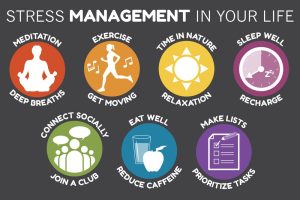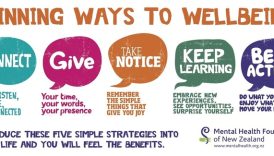Stress Management Techniques for a Balanced Life

Introduction to Stress Management
Understanding Stress
Stress is a natural response that everyone experiences. It can often feel overwhelming and even debilitating, but it’s essential to understand that stress is not inherently bad. It can serve as a motivator for important tasks or a protective mechanism in dangerous situations. However, when stress becomes chronic, it can adversely affect mental and physical health. Recognizing the signs of stress is the first step towards effective management. Common symptoms include:
- Stress Management Techniques for a Balanced Life
- Introduction to Stress Management
- Understanding Stress
- Importance of Stress Management Techniques
- Mindfulness and Meditation
- Practicing Mindfulness Daily
- Benefits of Meditation for Stress Relief
- Healthy Lifestyle Choices
- Importance of Exercise
- Nutrition and Diet Tips for Stress Management
- Relaxation Techniques
- Deep Breathing Exercises
- Progressive Muscle Relaxation
- Time Management Strategies
- Prioritizing Tasks
- Setting Realistic Goals
- Social Support and Connection
- Building Strong Relationships
- Seeking Help from Loved Ones
- Work-Life Balance
- Importance of Setting Boundaries
- Taking Breaks and Resting Properly
- Irritability and mood swings
- Difficulty concentrating
- Changes in sleep patterns
- Physical manifestations like headaches or stomach issues
Everyone experiences stress differently, which highlights the importance of individualized coping strategies. For example, someone might thrive under pressure while another feels crushed by the same demands.
Importance of Stress Management Techniques
Effective stress management techniques are crucial in maintaining balance in life. They can not only alleviate current stressors but also prevent future complications. Here are some compelling reasons why employing these techniques is important:
- Improved Mental Health: Stress management helps reduce anxiety and depression, contributing to a more positive mindset.
- Enhanced Physical Health: Lower stress levels can decrease the risk of chronic issues such as heart disease, obesity, and various other conditions.
- Better Relationships: Managing stress can result in more effective communication and less conflict with friends, family, and colleagues.
- Increased Productivity: When individuals harness stress management techniques, they are likely to feel more focused and efficient, leading to better overall performance in work and personal tasks.
Incorporating a few simple techniques into daily life can make a significant difference. Whether it’s through mindfulness practices, a healthy diet, or social connections, finding the right approach to stress management is an invaluable investment in one’s well-being.
Mindfulness and Meditation
Practicing Mindfulness Daily
Integrating mindfulness into daily routines can significantly enhance one’s ability to manage stress. Mindfulness involves being fully present in the moment, acknowledging thoughts, feelings, and sensations without judgment. This practice can transform mundane activities into opportunities for awareness and relaxation. Consider starting with these simple mindfulness exercises:
- Mindful Breathing: Take a few moments to focus solely on your breath. Inhale deeply, hold for a few seconds, then exhale slowly. This can be done anywhere—whether waiting in line or during a break at work.
- Body Scan: Lie down comfortably and gradually pay attention to each part of your body, from your toes to your head. Notice any tension and consciously relax those areas.
- Mindful Eating: Instead of rushing through meals, savor each bite. Pay attention to the flavors, textures, and aromas to create a more enriching eating experience.
By making mindfulness a daily habit, individuals can cultivate a sense of calm that carries throughout their day, reducing feelings of overwhelm.
Benefits of Meditation for Stress Relief
Meditation is a powerful tool for stress relief, offering a refuge from the chaos of everyday life. Engaging in meditation allows individuals to quiet their minds and connect with their inner selves. Here are some remarkable benefits of incorporating meditation into your routine:
- Reduced Anxiety: Studies show that regular meditation practice can lower levels of anxiety and promote a peaceful state of mind.
- Enhanced Focus: Meditation helps improve concentration, making it easier to tackle tasks without getting distracted by stressors.
- Greater Emotional Resilience: Practicing meditation can increase emotional awareness, enabling people to respond rather than react to stressors.
- Promotes Well-Being: Individuals often report a greater sense of overall well-being after consistent meditation practice.
Even dedicating just a few minutes a day to meditation can yield significant stress relief benefits. Whether it’s guided meditation, transcendental meditation, or simply sitting in silence, the key is to find a practice that resonates with you. In embracing these mindfulness and meditation techniques, one can unlock the door to a more tranquil and balanced life.
Healthy Lifestyle Choices
Importance of Exercise
Shifting focus to a healthy lifestyle, one of the most effective stress management strategies is regular exercise. Something as simple as a brisk walk can work wonders for mental and physical health. Exercise releases endorphins, often referred to as “feel-good” hormones, which can elevate mood and reduce feelings of anxiety. Here are a few reasons why incorporating exercise into your daily routine is crucial:
- Boosts Mood: Physical activity stimulates the production of neurotransmitters like serotonin, improving overall happiness.
- Improves Sleep Quality: Regular exercise can help you fall asleep faster and deepen your sleep, making it easier to tackle the day ahead.
- Increases Energy Levels: Contrary to what one might think, expending energy through exercise can actually lead to increased energy in the long run, reducing fatigue.
- Provides a Healthy Outlet for Stress: Engaging in physical activities can divert your mind from stressors, allowing for a mental reset.
Finding an activity you love makes it easier to stick with a routine. Whether it’s dancing, jogging, or yoga, the key is to keep moving!
Nutrition and Diet Tips for Stress Management
While exercise is a fantastic way to cope with stress, nutrition plays an equally vital role. What you eat has a substantial impact on your mood and stress levels. A balanced diet can provide the fuel necessary for mental clarity and improved emotional health. Consider these nutrition tips to help manage stress:
- Prioritize Whole Foods: Incorporate fruits, vegetables, lean proteins, and whole grains into your diet. They provide essential nutrients that support brain function.
- Limit Sugar and Caffeine: Both can lead to spikes and crashes in energy levels, which may worsen feelings of anxiety.
- Stay Hydrated: Dehydration can cause fatigue and irritability. Aim for at least eight glasses of water a day.
- Omega-3 Fatty Acids: Foods rich in omega-3s, such as salmon, walnuts, and flaxseeds, are known to reduce symptoms of anxiety and depression.
By combining regular exercise with a healthy diet, individuals can create a strong foundation for managing stress effectively. It’s about making small, sustainable changes that promote overall well-being and encourage a stress-free lifestyle.
Relaxation Techniques
Deep Breathing Exercises
As we transition into relaxation techniques, deep breathing exercises stand out as one of the simplest yet most effective ways to manage stress. Many people overlook the power of their breath, often resorting to quick, shallow breaths during stressful moments. Practicing deep breathing helps activate the body’s relaxation response, slowing down the heart rate and calming jittery nerves. Here’s a quick guide to an effective deep breathing exercise:
- Find a Comfortable Position: Sit or lie down in a quiet place where you can relax without interruptions.
- Inhale Deeply: Close your eyes and take a slow, deep breath in through your nose, allowing your abdomen to rise and fill with air for a count of four.
- Hold the Breath: Keep the air in your lungs for another count of four.
- Exhale Slowly: Breathe out through your mouth, emptying your lungs for a count of six. Focus on releasing tension with each exhale.
- Repeat: Continue this cycle for several minutes.
Regular practice of deep breathing not only helps in stressful situations but can lead to improved overall emotional regulation.
Progressive Muscle Relaxation
Another effective technique is Progressive Muscle Relaxation (PMR), which involves tensing and then relaxing different muscle groups throughout the body. This method fosters awareness of physical sensations and promotes profound relaxation. Here’s how to practice PMR:
- Choose Your Environment: Be in a comfortable, quiet place where you won’t be disturbed.
- Start with Your Feet: Tense the muscles in your feet for about five seconds and then release. Notice the difference between the tension and relaxation.
- Move Upward: Gradually proceed to your calves, thighs, buttocks, stomach, arms, shoulders, and finally your face, following the same tense-and-relax pattern.
- Focus on Breath: Breathe deeply as you tense, then exhale slowly as you release.
- End with Reflection: After you have gone through all muscle groups, take a moment to enjoy the relaxed state throughout your body.
Both deep breathing and Progressive Muscle Relaxation are powerful tools for alleviating stress and can easily fit into daily routines. By incorporating these techniques, individuals can create pockets of calm in their busy lives, enhancing their overall well-being.
Time Management Strategies
Prioritizing Tasks
As we delve into time management strategies, learning how to prioritize tasks effectively can be a game changer for managing stress. When faced with multiple responsibilities, it’s easy to feel overwhelmed. However, by sorting tasks into categories of urgency and importance, individuals can create a manageable workflow. One effective method for prioritizing tasks is the Eisenhower Matrix, which divides tasks into four quadrants:
- Urgent and Important: Do these tasks immediately. Examples might include a work deadline or a pressing family matter.
- Important but Not Urgent: Schedule these tasks for later. This may involve long-term projects or planning for the future.
- Urgent but Not Important: Delegate these tasks if possible. These could be things that require immediate attention but don’t necessarily align with long-term goals.
- Neither Urgent nor Important: Eliminate or minimize these tasks as they can drain energy and focus without offering much return.
By focusing on what truly matters, one can reduce the sense of chaos and enhance productivity.
Setting Realistic Goals
In conjunction with prioritization, setting realistic goals is another vital aspect of effective time management. Ambitious goals can often lead to disappointment and increased stress. Instead, breaking larger tasks into smaller, manageable steps can yield better results. Consider the SMART criteria for goal setting:
- Specific: Clearly define the goal. For instance, instead of saying “I want to get fit,” you could specify “I will exercise for 30 minutes, four times a week.”
- Measurable: Include concrete criteria for measuring progress. This could include using a fitness app to track workouts.
- Achievable: Ensure that goals are realistic given your resources and time. Striving for incrementally challenging yet attainable goals fosters motivation.
- Relevant: Align goals with your broader life objectives. This gives them meaning and purpose.
- Time-bound: Set a deadline for achieving each goal to create a sense of urgency and importance.
By embracing task prioritization and realistic goal setting, individuals can streamline their efforts, improve time management, and ultimately find greater peace in their daily lives. These strategies not only reduce stress but also lead to a heightened sense of accomplishment and satisfaction.
Social Support and Connection
Building Strong Relationships
As we explore the vital role of social support and connection in stress management, it becomes clear that building strong relationships is essential for emotional well-being. In our fast-paced lives, it’s easy to overlook the importance of nurturing personal connections, yet these relationships serve as a buffer against stress. Investing time in relationships can enhance feelings of belonging and support. Here are a few ways to foster strong connections:
- Communicate Openly: Sharing thoughts and feelings with loved ones can deepen bonds. The more you communicate, the better you understand each other.
- Spend Quality Time Together: Whether it’s a coffee catch-up or a fun outing, prioritizing time with friends and family strengthens ties. Small gestures, like spontaneous calls or texts, also go a long way.
- Be Present: Practice active listening when engaging with others. Being fully present shows that you value their input, fostering trust and connection.
- Engage in Shared Activities: Participating in hobbies or activities together can create lasting memories. It can be anything from hiking to cooking classes.
These practices not only cultivate strong relationships but also provide a foundation of support during challenging times.
Seeking Help from Loved Ones
Even with strong relationships, there may be moments when stress feels overwhelming. Recognizing when to seek help is crucial. Friends and family can be invaluable sources of support, offering different perspectives and encouragement. Here’s how to approach seeking help effectively:
- Reach Out Early: Don’t wait until stress becomes unmanageable. Sharing your feelings early on can prevent situations from escalating.
- Be Honest and Direct: When asking for help, be clear about what you need. Whether it’s someone to listen or practical assistance, honesty fosters authenticity in relationships.
- Accept Help Gracefully: Sometimes, people are hesitant to accept help. Remember, allowing others to support you strengthens your connections and shows them that you value their role in your life.
- Express Gratitude: Recognizing and appreciating the support received reinforces bonds and encourages reciprocal help in the future.
Building strong relationships and seeking help from loved ones creates a dependable support network, essential for navigating life’s stressors. By embracing connection, individuals can enhance resilience, experience fewer feelings of isolation, and cultivate a more fulfilling life.
Work-Life Balance
Importance of Setting Boundaries
As we transition into the topic of work-life balance, one of the most critical aspects to consider is the importance of setting boundaries. In a world where work and personal life often overlap, having clear boundaries is essential to avoid burnout and maintain mental well-being. Boundaries can take various forms, such as:
- Time Boundaries: Establish specific work hours and communicate them with colleagues and supervisors. This helps prevent work from seeping into personal time.
- Physical Boundaries: Create a dedicated workspace at home to separate work from leisure. If you work remotely, having a defined area can help mentally separate the two.
- Emotional Boundaries: Learn to say no to requests or tasks that exceed your capacity. Considering what aligns with your priorities is vital in maintaining balance.
By setting and respecting these boundaries, individuals can create a healthier work environment that supports personal time for relaxation and self-care.
Taking Breaks and Resting Properly
Along with setting boundaries, taking breaks and resting properly is crucial for effective work-life balance. Many individuals fall into the trap of believing that constant work leads to higher productivity. However, regular breaks can boost focus, creativity, and overall performance. Here are some strategies to incorporate breaks into your routine:
- Schedule Short Breaks: Use techniques like the Pomodoro Technique, where you work for 25 minutes and then take a 5-minute break. This rhythm can enhance concentration and give your mind a chance to recover.
- Engage in Relaxation Activities: During breaks, engage in light stretching, a quick walk, or mindfulness exercises. These activities can refresh your mind and body.
- Know When to Disconnect: Whether it’s turning off notifications after work hours or setting an auto-responder for emails, knowing when to disconnect from work helps reinforce boundaries.
- Prioritize Rest: Ensure that you allocate enough time for sleep and restorative activities. Quality sleep is vital for maintaining energy and resilience.
By prioritizing boundaries and incorporating regular breaks into daily routines, individuals can achieve a more sustainable work-life balance. This balance not only minimizes stress but also enhances overall productivity and fulfillment in both personal and professional realms. Embracing these practices can lead to a more enriched and harmonious life.





